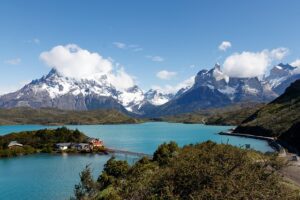
Few places on Earth capture the imagination of hikers and nature lovers like Torres del Paine National Park in southern Chile. With its dramatic granite towers, sprawling glaciers, shimmering lakes, and vast Patagonian steppe, this UNESCO Biosphere Reserve is often called the crown jewel of Chilean Patagonia — and for good reason.
Thank you for reading this post, don't forget to subscribe!Located in the remote southern tip of South America, Torres del Paine offers hikers a chance to immerse themselves in one of the most spectacular and unspoiled landscapes on the planet. From the iconic W Trek to challenging multi-day expeditions, there’s a trail here for every level of adventurer. And beyond the hikes, wildlife encounters, surreal sunsets, and a connection to the raw power of nature await those who venture to this remarkable corner of the world.
In this article, we’ll explore the highlights of Torres del Paine, the best hiking routes, what to expect when visiting, and why it’s a must-see for anyone who loves the outdoors.

Why Visit Torres del Paine?
Named for its iconic Torres (towers) — three granite spires that rise dramatically above the surrounding landscape — the park encompasses over 1,800 square kilometers (700 sq mi) of diverse ecosystems. Here, snow-capped mountains meet sprawling glaciers, turquoise lakes reflect the sky, and golden pampas stretch out as far as the eye can see.
A few reasons why hikers and travelers from around the world make the pilgrimage here:
✅ Breathtaking Scenery: The combination of jagged peaks, valleys, rivers, and lakes creates one of the world’s most photogenic landscapes.
✅ World-Class Hiking: Home to some of the most iconic trekking routes in the world, including the W and O circuits.
✅ Unique Wildlife: Guanacos, foxes, condors, flamingos, and even elusive pumas roam freely here.
✅ Pristine Wilderness: Despite its growing popularity, Torres del Paine still feels wild and remote.
For many, hiking through this vast and dramatic terrain feels like stepping into another world — one of raw beauty and quiet grandeur.
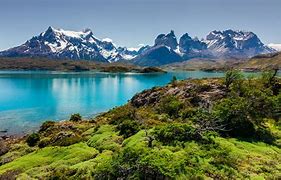
How to Get There
Reaching Torres del Paine takes some effort, but the journey is part of the adventure.
✈️ By Air
Most visitors fly into Punta Arenas, the largest city in Chilean Patagonia, from Santiago or Puerto Montt. From there, it’s about a 3–4 hour drive north to Puerto Natales, the nearest town to the park.
From Puerto Natales
Puerto Natales serves as the main base for hikers and travelers. Regular buses and private transfers take visitors to the park entrance (about a 2-hour drive).
Pro tip: Stock up on supplies and rent gear in Puerto Natales before heading into the park, as options are limited once inside.
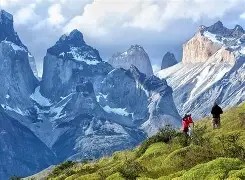
Best Hiking Routes
Hiking is the main reason people visit Torres del Paine. Whether you’re looking for a short day hike or an epic multi-day trek, the park delivers.
1️⃣ The W Trek
Distance: ~80 km (50 miles)
⏳ Duration: 4–5 days
Difficulty: Moderate
The W Trek is the most famous route in the park, named for the shape it traces through the valleys and mountains. It covers the highlights of Torres del Paine and can be done west to east or vice versa.
Highlights include:
- Mirador Las Torres: the viewpoint for the iconic towers.
- Valle Francés: a dramatic valley surrounded by jagged peaks.
- Grey Glacier: a massive glacier spilling into Lago Grey.
This trek can be done independently (with reservations at refugios or campsites) or with a guided group.
2️⃣ The O Circuit
Distance: ~110 km (68 miles)
⏳ Duration: 7–9 days
Difficulty: Challenging
For more adventurous hikers, the O Circuit (also called the Full Circuit) loops around the entire park, adding more remote sections and stunning scenery. It includes everything on the W plus the backside of the park, where solitude and wilderness reign.
3️⃣ Day Hikes
If you don’t have time (or stamina) for a multi-day trek, you can still experience some of the park’s highlights on shorter day hikes:
- Mirador Las Torres: ~8–10 hours round-trip to the towers’ base.
- Lago Grey: Walk along the lake to see icebergs and Grey Glacier.
- Salto Grande: A short, easy hike to a thundering waterfall with great views of the Cuernos peaks.
Disclosure
As an Amazon Associate, I earn from qualifying purchases. This website also contains other affiliate links, and we may earn a small commission if you make a purchase through them — at no extra cost to you. We only recommend products and services we trust and believe will enhance your outdoor adventures. Thank you for supporting our work! South America Adventure Gear Guide here
Discover the best drones and essential accessories to capture breathtaking landscapes, wildlife, and adventures across South America perfect for beginners and pros alike! 50 Best Drone Gear & Accessories
Drone Use: Know Before You Fly
Drone regulations vary widely depending on the location. Some parks, natural areas, and landmarks prohibit drones to protect wildlife, visitors, and sensitive environments, while others may allow them with certain restrictions or permits. Always check local, state, and federal rules before flying, respect no-fly zones, and prioritize safety, privacy, and environmental care during your adventure.
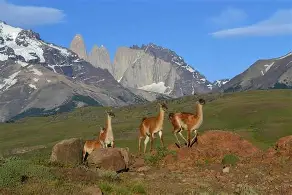
Wildlife & Nature
One of the joys of hiking in Torres del Paine is encountering its rich and varied wildlife. Keep your eyes peeled and your camera ready!
Guanacos
These wild relatives of the llama are everywhere, grazing in herds across the pampas.
Andean Condors
Look up — these massive birds (with wingspans up to 3 meters) often soar high above the cliffs.
Pumas
Elusive and shy, pumas live throughout the park. While rare, sightings have increased in recent years, especially during early morning or late evening.
Birds & More
- Flamingos in the lagoons.
- Foxes darting across the trail.
- Rheas (large, flightless birds) roaming the grasslands.
- Deer, hares, and even armadillos.
The variety of ecosystems — from glaciers to grasslands — supports an impressive diversity of plant and animal life.

When to Go
The weather in Patagonia is famously unpredictable, but the main hiking season runs from November to March (Southern Hemisphere summer).
Seasons at a Glance:
- Summer (Dec–Feb): Warmest and busiest; long daylight hours.
- Spring (Oct–Nov): Fewer crowds, wildflowers in bloom.
- Autumn (Mar–Apr): Beautiful fall colors and cooler temperatures.
- Winter (May–Sep): Cold and snowy; some trails and refugios closed, but spectacular if you’re prepared.
Even in summer, be prepared for strong winds, sudden rain, and temperature swings.
What to Pack
Packing smart is crucial, as conditions can change quickly:
Waterproof jacket & pants
Warm layers (fleece, down)
Sturdy hiking boots
Hat & gloves
Sunscreen & sunglasses
High-energy snacks
Water bottle & purification tablets
Camera & extra batteries
Binoculars for wildlife viewing
If camping, bring a quality tent, sleeping bag, and cooking supplies — or book spaces in refugios (mountain lodges) where meals and bedding can be provided.
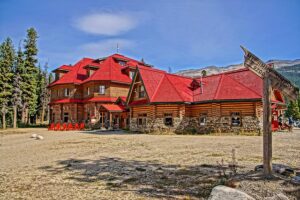
Where to Stay
Camping
There are designated campsites throughout the park. Some are free (but basic), while others are private with facilities like hot showers and cooked meals.
Refugios
These mountain lodges offer dormitory-style beds, hot meals, and a cozy place to rest after a long day.
Hotels & Lodges
Luxury lodges and eco-hotels are available near the park’s entrances for those seeking more comfort.
Reservations — especially for the W and O treks — are essential and should be made months in advance during peak season.
Responsible Hiking
The park’s fragile ecosystems require careful stewardship:
✅ Stay on marked trails to avoid damaging plants.
✅ Pack out all trash — even biodegradable items.
✅ Use designated toilets or dig a small hole away from water sources.
✅ Never feed wildlife.
✅ Follow fire regulations strictly — wildfires have devastated the park in the past.
Respect for the park ensures it remains a pristine wilderness for generations to come.
✨ Beyond the Hikes
Even if you’re not an avid hiker, Torres del Paine offers plenty of other activities:
- ? Boat trips to see Grey Glacier and floating icebergs.
- ? Horseback riding across the pampas with local gauchos.
- ? Kayaking on lakes and rivers.
- ? Photography tours to capture the park’s ethereal light and colors.
Nearby Puerto Natales is also worth exploring, with its charming waterfront, cozy cafes, and excellent restaurants serving Patagonian lamb and king crab.
Why It’s Called Chile’s Crown Jewel
Few places embody the spirit of Patagonia like Torres del Paine. Its otherworldly beauty, endless hiking opportunities, and diverse wildlife make it a destination that inspires awe and wonder. For hikers, photographers, and nature lovers, it’s more than just a park — it’s a pilgrimage.
As you stand at the base of the towering granite spires, feel the cold wind on your cheeks, and watch guanacos grazing on the golden steppe, you’ll understand why so many travelers consider Torres del Paine the highlight of their journey through South America.
So lace up your boots, shoulder your pack, and set out to explore one of the most iconic landscapes on Earth — where every trail leads to adventure.
 Explore More Adventure Hubs:
Explore More Adventure Hubs:

Leave a Reply